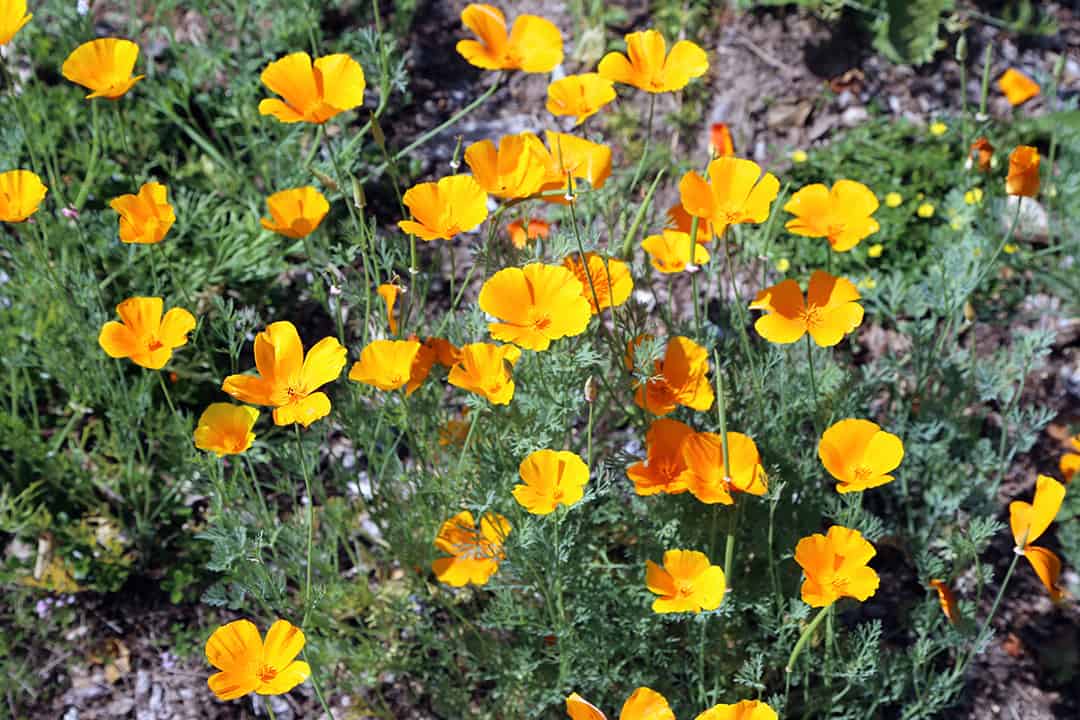Imagine: She said, “The gravel driveway and path are fine, but couldn’t there be something green and growing here? Why can’t there also be flowers?”
Name: Eschscholzia californica aka the California poppy.
Type of Plant: A cool-weather annual. In other words, don’t expect this poppy to flower all summer. But do expect it to grow in very sandy soils, gravel and on fairly dry slopes. Do expect it to self-seed and return year after year.
Why I love this plant: This is one of my “party crashers.” You don’t always invite them to the garden party, but they show up uninvited, always so colorfully dressed that I allow many of them to stay. I love California poppies in particular because they arrive early to the celebration, before many other annuals are filled out and flowering. They are willing to party where other plants are not, and they play well with others.
A Word to the Wise: Sprinkle seeds where you want California poppies to grow. I have found that putting them in place as early as March is a good idea. They will germinate when the time is right. Wait until their seed pods form and turn brown before removing the dead or dying plants. You can pick off browned seed pods as they mature and toss them in the areas of the landscape where you need their fine foliage and cheerful flowers.
There are many colors or cultivars of Eschscholzia californica available, but the golden species plant is the most reliable. So if you want pinks, doubles, or fancy colors, by all means go for it. But include some of the plain ones so that you know that you’ll have many party guests.

These California poppies flourish on a slope that is part gravel, part wood chips. Full sun and fairly dry. Perfect conditions for this plant. These plants are in full bloom earlier than most other annuals.

California poppies play well with others – their foliage doesn’t shade out neighboring plants, and they aren’t water hogs. The tall Verbascum in this photo are perfect companions for Eschscholzia californica in that they both like similar conditions and flower at the same time. Later, they can give way to the Asclepias tuberosa and other later-flowering, drought tolerant plants.

And how can we not smile when we see these flowers?

0 Comments